In this post, I will show you how to connect dell management portal with Intune. Dell’s cloud-based management portal provides a unified platform for IT administrators to simplify management of dell devices.
By integrating the Dell Management Portal with Intune, you can extend native Intune capabilities to include OEM-specific features such as BIOS management, Dell enterprise application updates, Device management etc. For more details, refer to the link: Intune expands OEM integration in partner portal – Microsoft Intune Blog.
Contents
Key Features of Dell Management Portal
When you connect the Dell Management Portal with Intune, you get a dashboard view of all Dell devices managed by Intune. Apart from the dashboard view, you will also get a Devices tab, Apps tab, BIOS policies tab, and TechDirect link. Below are the key features of Dell management portal.
- View and manage Dell PCs directly via Intune.
- The portal works for all new and previous generations of Dell commercial devices.
- Create and publish Dell BIOS policies to Intune directly via Dell management portal. Once the policies are published, you can assign it to devices.
- Security: One of the benefits of the portal is its ability to recover current and previous BIOS passwords and BitLocker recovery keys.
- Device management: Access device and user specific information directly from dell management portal. The portal includes, device OS, hardware and storage related information. For users, it will include username and contact information.
- App management: You can publish dell enterprise applications to Intune and manage the assignments in Intune portal. Find the latest updates of dell enterprise apps and create an Intune deployment directly. You can manage below Dell apps via Dell management portal:
- Dell Command | Monitor
- Dell Command | End Point Configure for Microsoft Intune
- Dell Command | Update
- Dell Support Assist for Business PCs
- Dell Trusted Device
- Reporting: Checking reports for the devices, which are refreshed every 30 minutes.
Connect Dell Management Portal with Intune
It’s quick and straightforward to connect dell management portal with Intune. Let’s check the steps:
- Sign in to the Intune admin center > Devices > Partner Portals > Dell Management Portal.
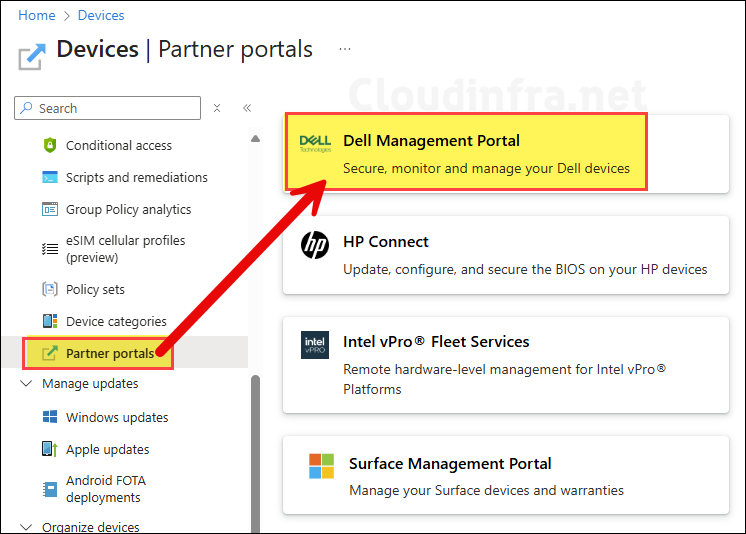
- After you click on Dell Management Portal, it will redirect you to https://manage.dell.com/?refer=intune.
- Click on Connect now.
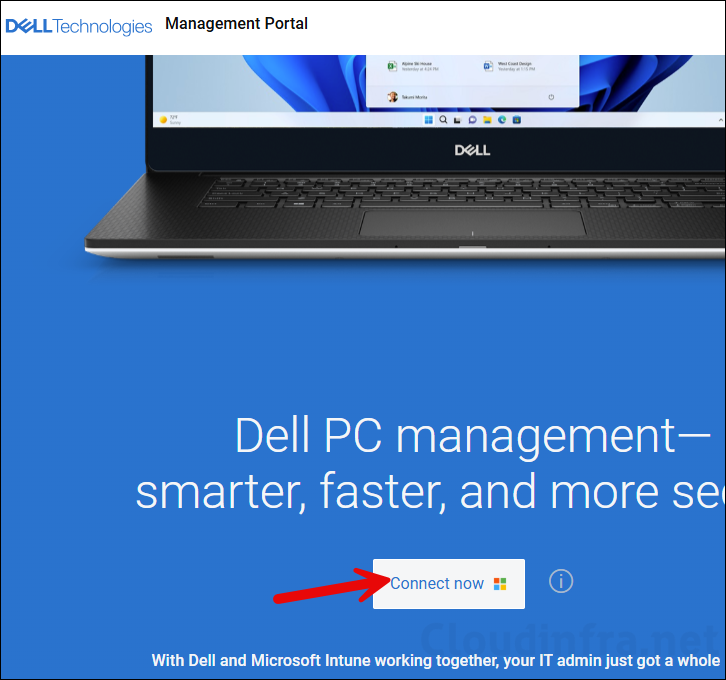
- Select Consent on behalf of your organization and click Accept.
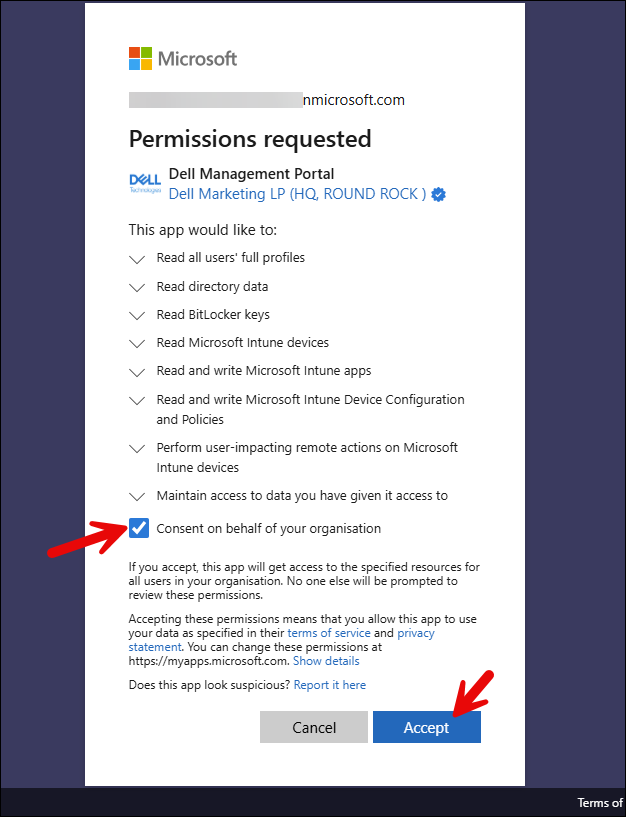
- That’s it — the Dell Management Portal is now connected. All your Intune-managed Dell devices will appear under Devices.
Publishing Applications
Click the Apps tab to check for critical updates, view installation status, and download or publish apps directly to Microsoft Intune through the Dell portal. Apps tab displays the app name, status, and color-coded states that indicate the criticality of each update.
- Critical update available (Red)
- Recommended update available (Green)
- Optional updates (blue)
- Published updates (grey)
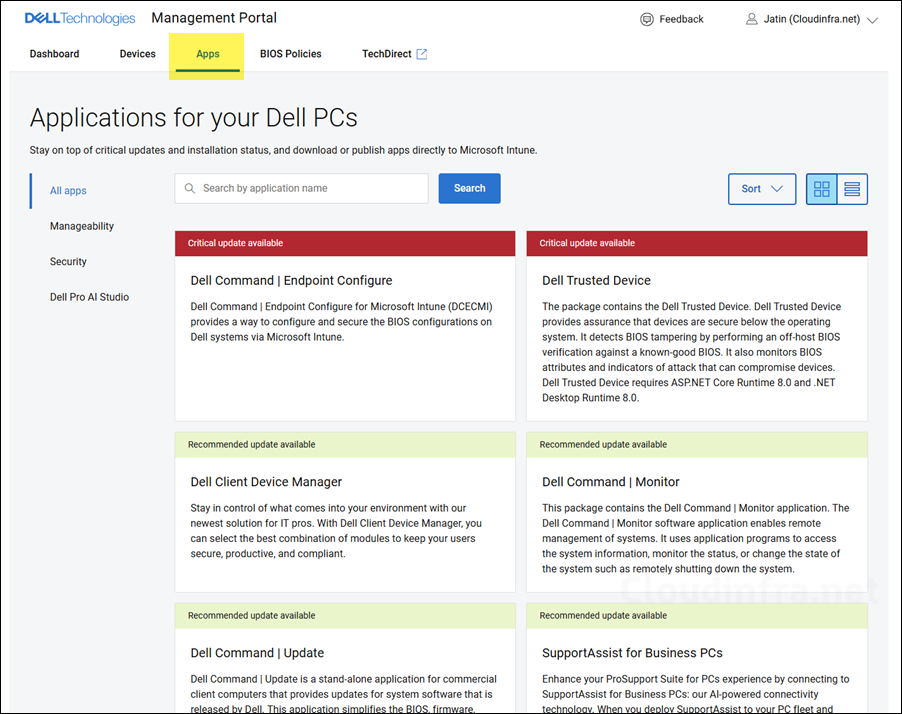
- Click Publish Now. This will automatically publish the app to Intune, but it will not be assigned to any user or device.
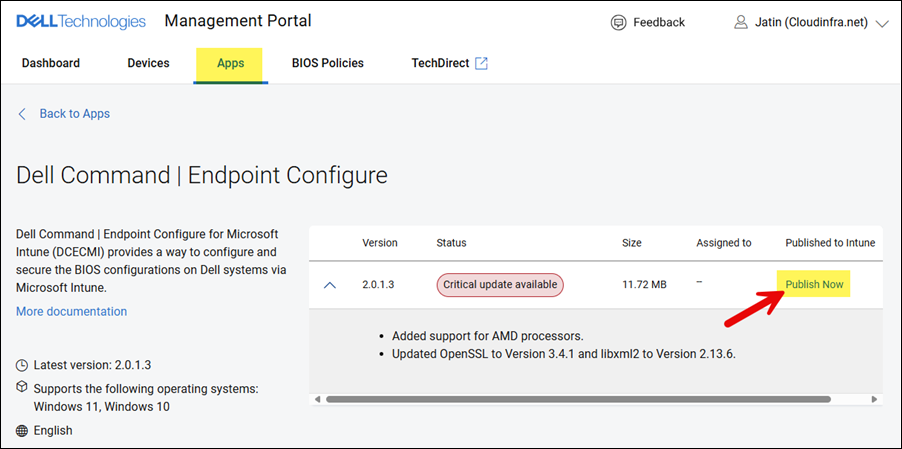
- The app is now being added to Intune. Once it is published, you will see the message Published to Intune on the screen. Click Yes, open Intune apps, which will redirect you to the Intune portal where you can manage the app.
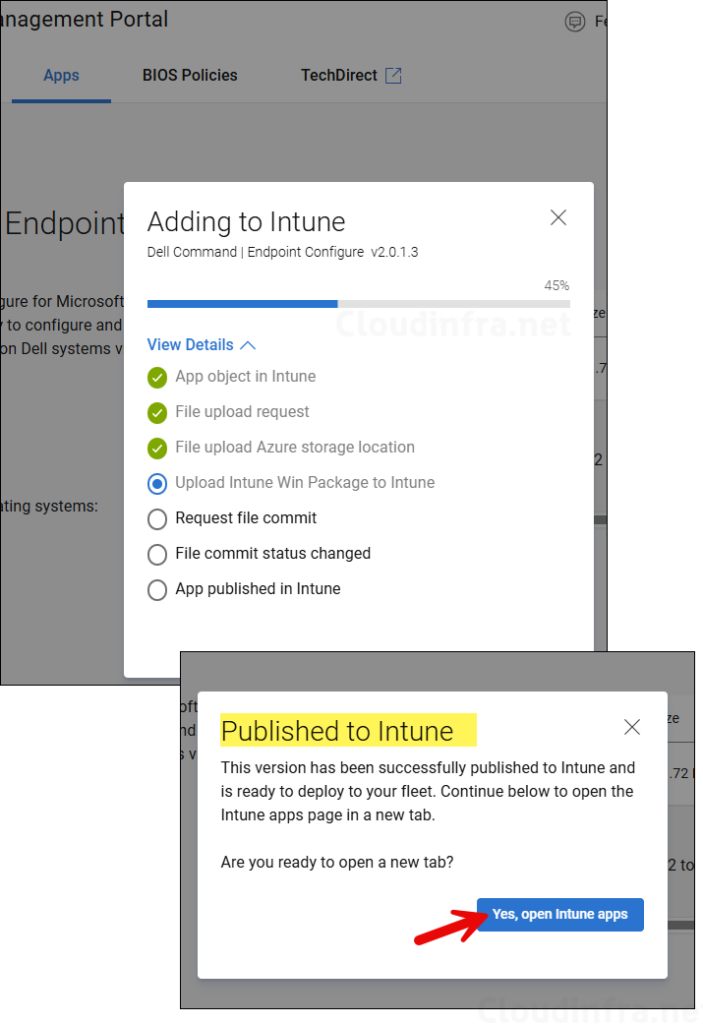
- After you click the Yes, open Intune apps button, you will be taken directly to the published application. At the top of the screen, you’ll see a message indicating that the app has not yet been assigned.
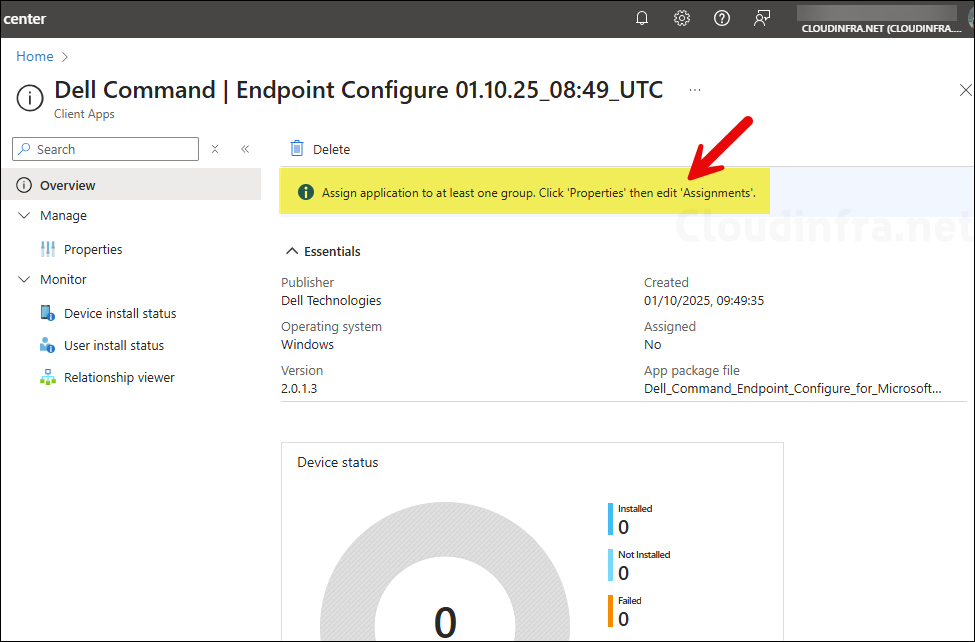
- Click Properties, then select Edit next to Assignments. Under the Required section, click + Add group to deploy the app as soon as possible, and choose the group you want to assign the app to. For guidance on assignment strategy, see Intune assignments: User groups vs. Device groups.
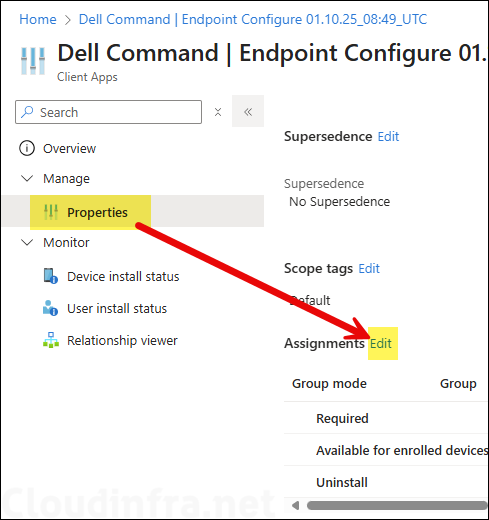
Creating BIOS Policies
You can configure up to 448 BIOS settings through the Dell Management Portal across all Dell systems and save them as a Dell BIOS policy. You also have the option to set unique, per-device randomized BIOS passwords.
- Open the Dell management portal and click on BIOS policies tab.
- On the right-hand side, Click on Create a New policy.
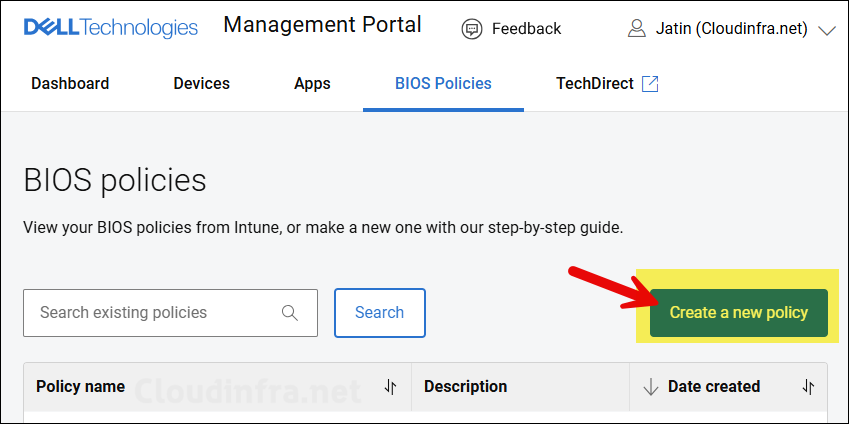
- You will get two options to create this policy: Start a blank policy file or Copy then edit. In this case, I’ll select Start a blank policy file and click Next.
- Provide a Policy Name and Description and click Next.
- Select BIOS attributes you want to configure in the BIOS policy and click Next.
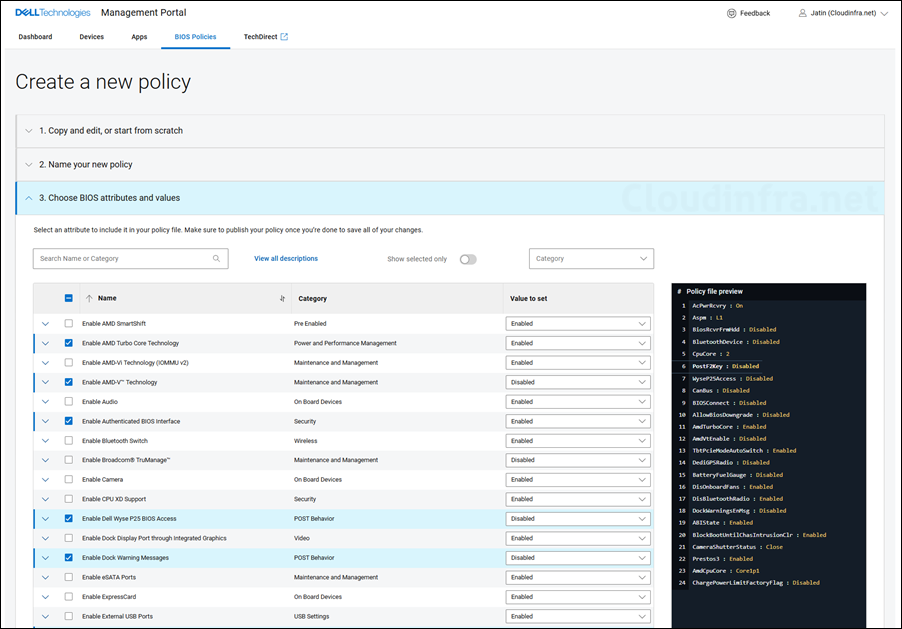
- Configure BIOS password protection: Set this to Yes to update a new, unique BIOS password for each targeted device.
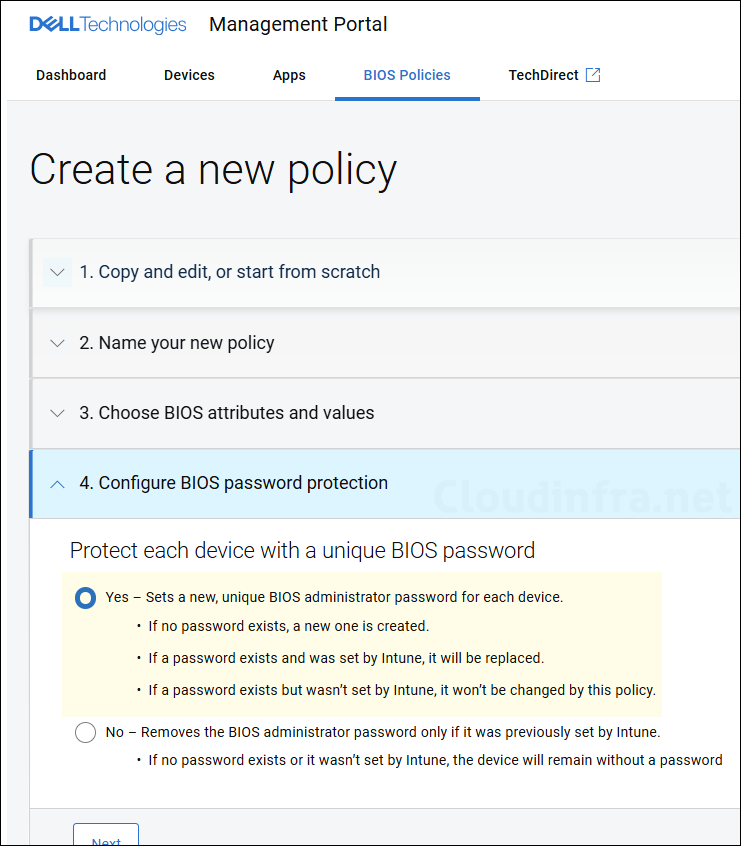
- The BIOS policy has now been published, and you can view it in Intune.
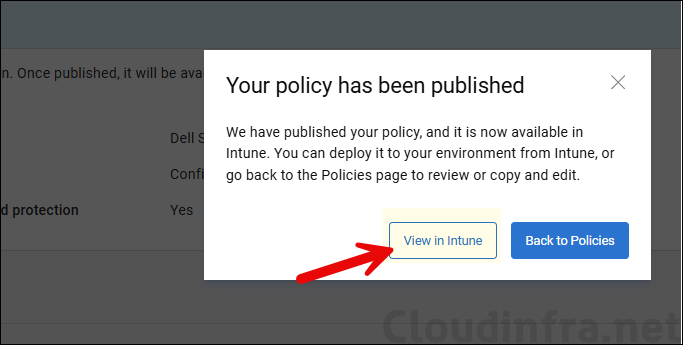
- By default, the policy is not assigned to any device. To manage its assignments, go to Intune and click Edit next to Assignments.
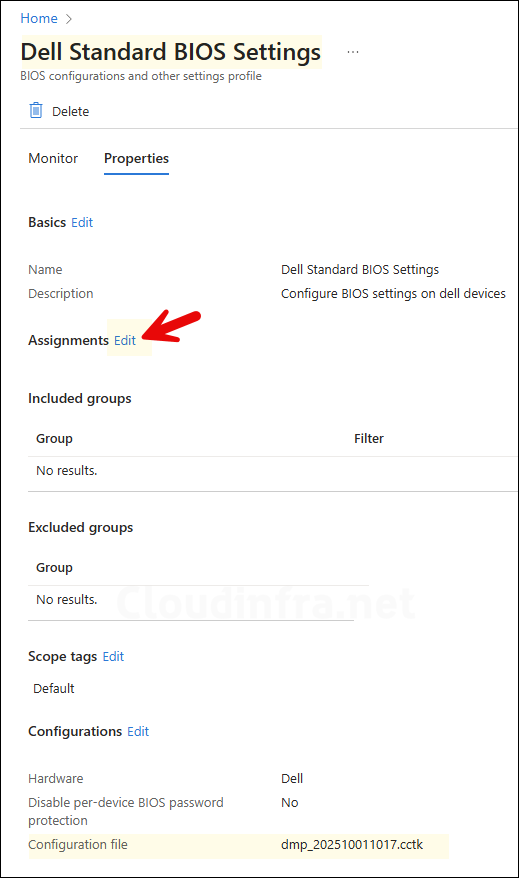
Conclusion
To summarize, I suggest integrating the Dell Management Portal with Intune if you are managing Dell devices. The portal provides a centralized view and allows you to create BIOS policies directly. You can also use the Apps tab to monitor Dell-specific applications and ensure that all critical and recommended updates are applied.
